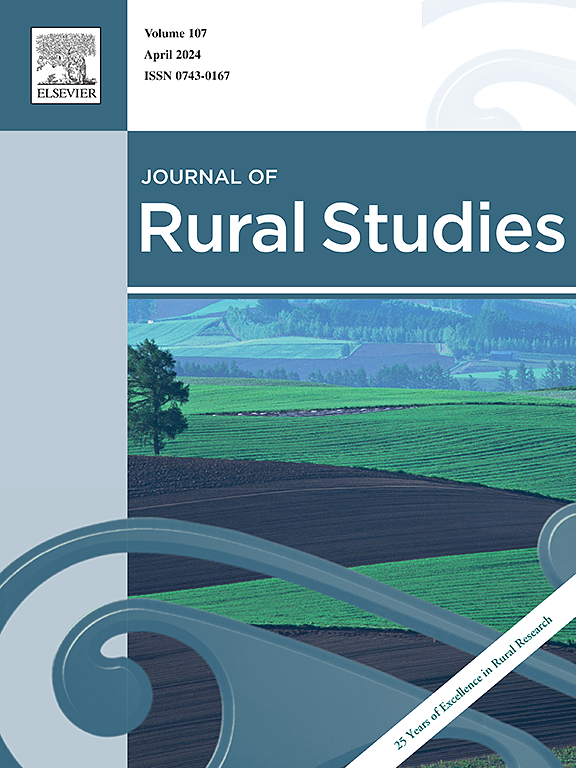Spatial optimization of cropping patterns of staple crops to enhance supply–demand balance in China
IF 5.7
1区 社会学
Q1 GEOGRAPHY
引用次数: 0
Abstract
The spatial regulation of cropping patterns (CPs) plays a critical role in establishing a sustainable spatial structure of food supply and demand. Based on planting structure data for China's three major staple crops from 2015 to 2020, this research utilizes the PLUS model to perform multiple scenario-based analyses and assess the impacts of different governance strategies on food supply–demand dynamics by 2030. The results indicate that China's CPs are undergoing systematic and spatially uneven transformations, primarily driven by non-agriculturalization (NA) and non-grain conversion (NGC), reflecting mounting challenges to sustainability. Under the natural development scenario (NDS), NA and NGC are expected to persist, while the expansion of single-season grain cropping (SSGC) may emerge as a new threat to national food security. Among the three single-policy scenarios (NGC control scenario, NA control scenario, and SSGC control scenario), only NGC control significantly increases grain output, whereas NA and SSGC interventions yield limited regional improvements but fall short of achieving structural balance at the national level. In contrast, the integrated control scenario effectively coordinates multiple strategies to simultaneously enhance grain production, optimize cropping structure, and strengthen regional self-sufficiency. Furthermore, based on CP evolution patterns, this study classifies counties nationwide into four governance zones and proposes tailored strategies for each, improving spatial policy responsiveness and effectiveness. In summary, this study confirms the effectiveness of CP spatial regulation in optimizing the food supply–demand configuration and provides both theoretical foundations and empirical support for cultivated land use control and food security governance in China.

中国主粮作物种植格局空间优化促进供需平衡
种植格局的空间调控对构建可持续的粮食供需空间结构具有重要作用。本研究基于2015 - 2020年中国三大主粮作物种植结构数据,利用PLUS模型进行多场景分析,评估不同治理策略对2030年中国粮食供需动态的影响。结果表明,中国农村正经历着系统性和空间不均衡的转型,主要受非农业化和非粮食化的驱动,反映出可持续发展面临的挑战日益严峻。在自然发展情景(NDS)下,预计NA和NGC将持续存在,而单季粮食种植(SSGC)的扩张可能成为国家粮食安全的新威胁。在三种单一政策情景(NGC控制情景、NA控制情景和SSGC控制情景)中,只有NGC控制显著提高了粮食产量,NA和SSGC干预在区域上的改善有限,但在国家层面上未能实现结构平衡。综合调控情景有效协调多种策略,实现粮食增产、优化种植结构、增强区域自给的同步发展。在此基础上,将县域划分为四个治理区域,并提出了相应的治理策略,以提高空间政策的响应性和有效性。综上所述,本研究证实了CP空间调控在优化粮食供需配置中的有效性,为中国耕地利用控制和粮食安全治理提供了理论基础和实证支持。
本文章由计算机程序翻译,如有差异,请以英文原文为准。
求助全文
约1分钟内获得全文
求助全文
来源期刊

Journal of Rural Studies
Multiple-
CiteScore
9.80
自引率
9.80%
发文量
286
期刊介绍:
The Journal of Rural Studies publishes research articles relating to such rural issues as society, demography, housing, employment, transport, services, land-use, recreation, agriculture and conservation. The focus is on those areas encompassing extensive land-use, with small-scale and diffuse settlement patterns and communities linked into the surrounding landscape and milieux. Particular emphasis will be given to aspects of planning policy and management. The journal is international and interdisciplinary in scope and content.
 求助内容:
求助内容: 应助结果提醒方式:
应助结果提醒方式:


